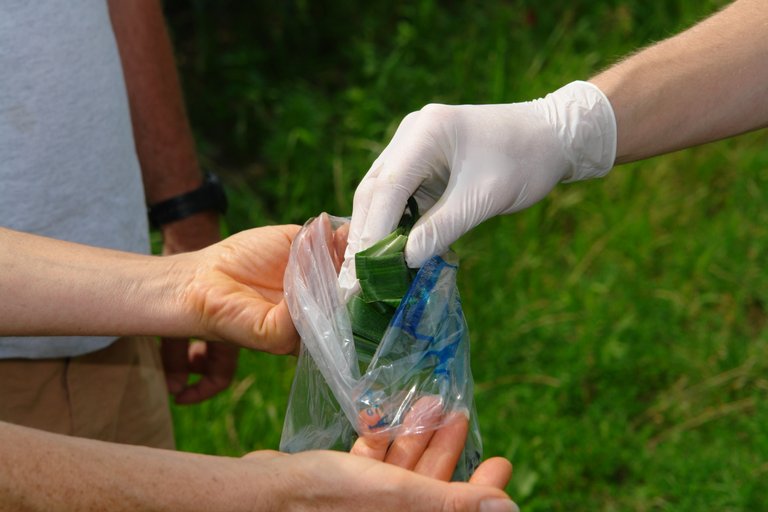Genetically modified Organisms (GMOs): Separating Fact from Fiction
It is corn season in South Western Nigeria and I decided to order for corn seeds from the International Institute of Tropical Agriculture (IITA) for my dad's farm and we were going to plant this corns so we get results in the next 2 to 3 months. When I bought the seeds, it was written "Non-GMO F1" and my sister was happy that it was not genetically modified. I asked her why, and her response was similar to what a lot of people would say, it would have been tweaked, and bad for consumption.
Hearing this things can either sway you if you do not have a good knowledge of it, or make you laugh if you understand what Genetically modified Organisms are. So I decided to explain what GMOs are to her, and I will be doing the same in this post.
When you hear the word GMO, it refers to any life form either plant, animal or microbial organisms that has had a change in DNA. Instead of hearing the word GMO and start to panic because of the obscure ideas Sci-fi movies, it is great that we know that we are surrounded by genetically modified organisms such as bacteria being modified to secrete insulin, cheese, vaccines, and so on but while we look at GMOs as beautiful when it comes to vaccines, and other aspects, it becomes a matter of concern when it has to do with food.
With food, GMOs have created a debate with people saying it could either save humanity or be the reason be food insecurity globally. There are about 180 million hectares of lands where genetically modified crops are planted in over 25 countries. I have seen certain genetically modified crops including corn, soybean, apples, potatoes and papaya, but then other plants like Alfalfa, cotton, canola, pineapples, summer squash, and Sugar beets can be genetically modified.
The word Genetically modified can be vague, not explaining what has been genetically changed in the organism and so it makes it look like it is a bad thing but then food isn't what it was 10,000 years ago what it is now, a lot of things have changed since then for instance, watermelon wasn't always Red and attractive, it was white and unappetizing but today it is different.
GMOs have been able to help humans with Artificial Selection where we choose individual organisms with certain phenotypic trait values for breeding but with this, we can only transfer genes from organisms of closely related species and the numbers of gene that will be transferred from each of the organisms making the outcome unpredictable and this led to genetic engineering.

Wikimedia
Let me guess, you heard Genetic Engineering before and with genetic engineering, one gene can be moved from one organism to another even when they are not of the same species. Genes are responsible for carrying out cell functions, and traits from parents. Genes transferred within the same species is called Cisgenics but with genetic engineering, genes can be transferred from different species and it is known as Transgenics.
Creating a Genetically Modified crops take long process and several years. The traits to add into the recipient plant is going to be identified, also the plant to give the gene is to be identified. After this is identified, copies of the gene to be transferred is to be created after which the DNA is to be inserted into the genetically modified plants. To get the gene into the organism, a vehicle (vector) is needed to carry the gene into the recipient's cell, and the most commonly used vector is Agorbacterium tumefaciens or using a gene gun.
It is after the genetic modification has been successful and tested that regulatory bodies are met for verification. Genetically modifying plants aren't bad as we have been able to genetically modify crops like papaya against the viruses that infect them, corn soybeans and cotton against insect pests as they release bacteria toxin that kill them.
While navigating the complex landscape of GMOs, it is essential to approach the discourse with discernment and an appreciation for scientific rigor. While acknowledging the potential benefits of genetic engineering in addressing pressing agricultural challenges, we must remain vigilant to mitigate potential risks and ensure the responsible stewardship of genetic resources for the betterment of humanity and the planet.
Reference
https://sciencebasedmedicine.org/national-academy-of-sciences-report-on-gmos/
https://royalsociety.org/news-resources/projects/gm-plants/what-gm-crops-are-currently-being-grown-and-where/
https://ejbpc.springeropen.com/articles/10.1186/s41938-018-0051-2
http://www.jafs.com.pl/pdf-70020-7980?filename=Nutritional
https://www.sciencedirect.com/science/article/pii/S1871678410005145
https://www.ncbi.nlm.nih.gov/pmc/articles/PMC4218791/
https://www.ncbi.nlm.nih.gov/pmc/articles/PMC6173531/
https://sitn.hms.harvard.edu/flash/2015/insecticidal-plants/
https://ejbpc.springeropen.com/articles/10.1186/s41938-018-0051-2

Thanks for your contribution to the STEMsocial community. Feel free to join us on discord to get to know the rest of us!
Please consider delegating to the @stemsocial account (85% of the curation rewards are returned).
Thanks for including @stemsocial as a beneficiary, which gives you stronger support.